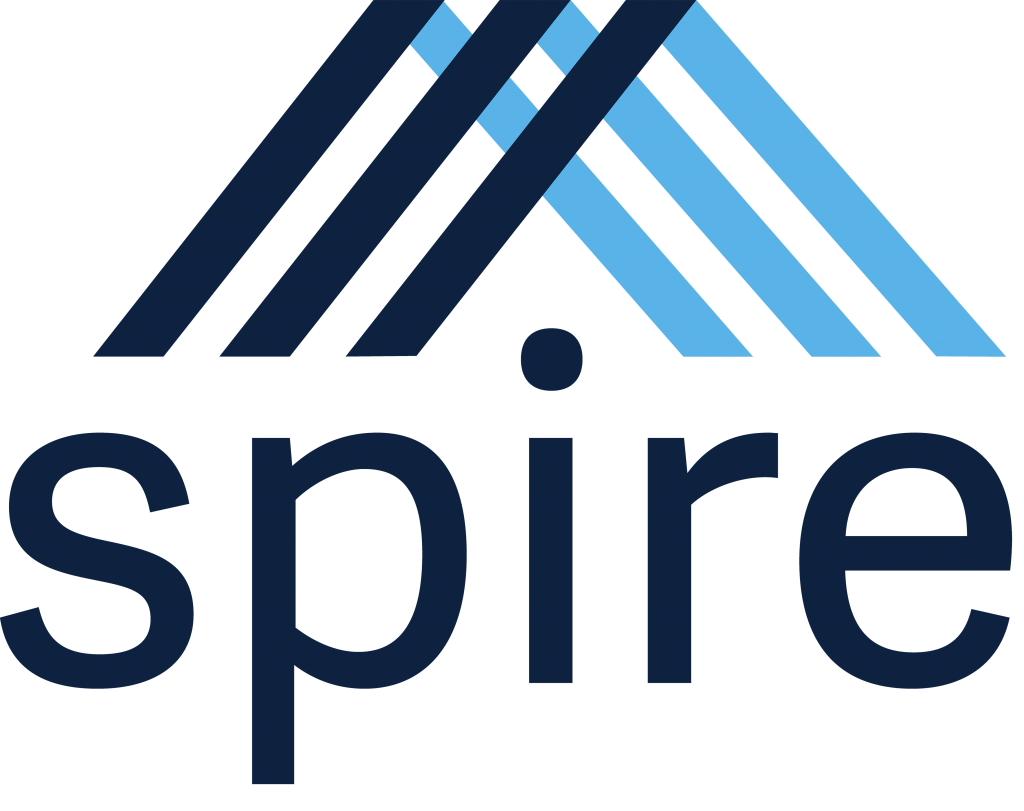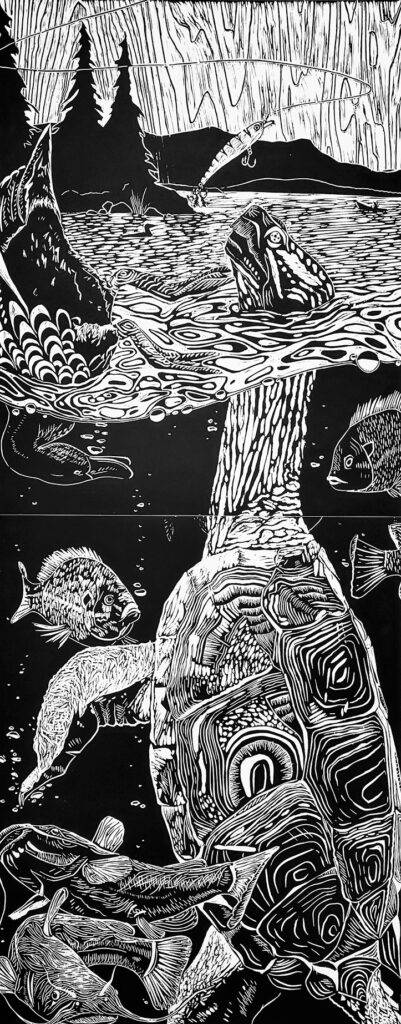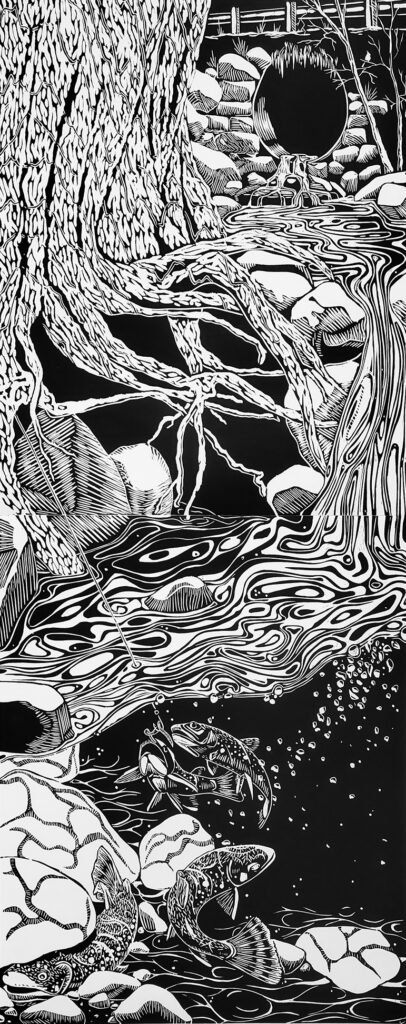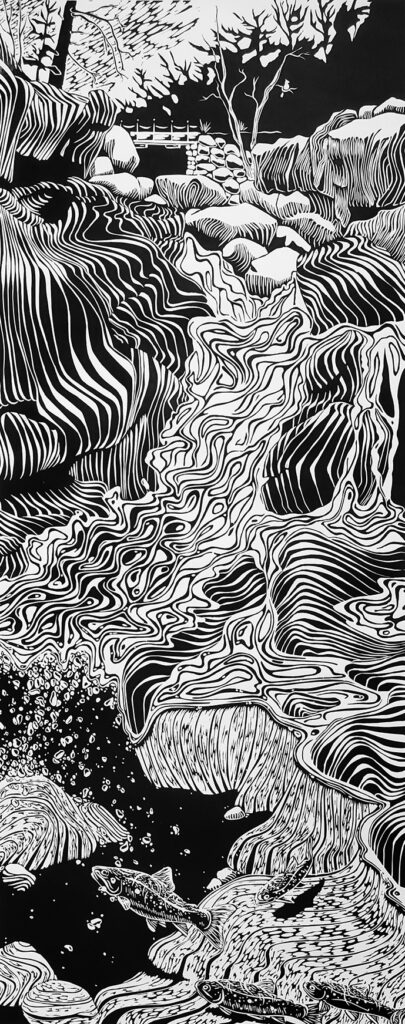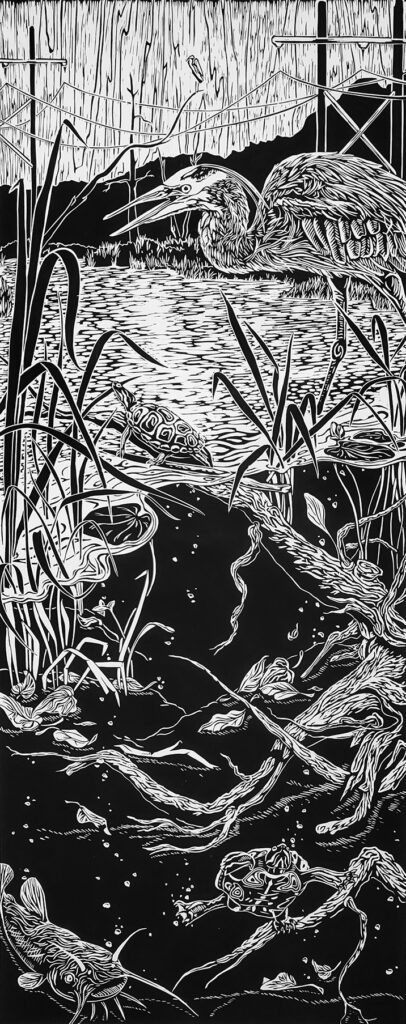Art Series: Interactions in Maine Landscapes, Woodcut Prints
Artwork by Rachael Murphy
Brice the Behemoth Honey Hole
Coo’s Canyon City Forest
Artist Statement
My interest in the arts began while looking at paintings by deceased relatives hanging in my grandparents’ home. I would imagine what their meandering thoughts sounded like as they painted. I find inspiration in Janet Dexter Storer’s artwork — who I only know through my grandmother’s stories. She lived and worked in Weld, Maine, capturing its beauty through landscapes. Her most memorable, humorous statement I carry with me is, “It takes two to make a painting: one to paint it and the other to shoot them before they ruin it.” I never see my artistic process as finished, always looking for a new issue to solve or address, yet I keep Janet’s statement in mind as I approach a possible stopping point.
My artwork oscillates between realistic imagery and abstract forms, depending on the chosen media. It is a vehicle for processing personal interactions with the world, simultaneously layered with broader issues and themes. Complex, broken patterns and colors create a larger image or form. This patterning acts as a facade hiding my themes and subjects, like the perfected masks we all seem to wear interacting with the world. This patterning also brings intricate beauty to my subjects that may appear ordinary or mundane.
Brice the Behemoth, 2020, is a record of my summer through encounters with wildlife around Weld, Maine where I spend my summers. This print is a search for positivity during these stressful and uncertain times with the pandemic and climate change weighing on my mind. Interactions with creatures and places fixed my mind in the present. I find myself reflecting on the value of small moments, becoming an observer of my surroundings. Human activity is present in the environment — but not overtaking it completely. Even when nature takes back developed areas, it is never quite the same. The forests around Webb Lake were once cleared for farmland and housing development. The nearby town of Weld shrunk dramatically as abandoned houses collapsed. Brice the Behemoth was the start of a larger series tentatively titled Remnants.
Honey Hole, 2021, is a continuation of this dialogue I am developing in this series of prints. The drainage pipe is just outside the center of Weld. The brook that runs through it trickles late in the summer season. I initially assumed nothing could survive in the small pools, but beautiful wildlife lives just below the surface. Coos Canyon, 2021, depicts a canyon in western Maine that is a popular tourist destination. I consider how foot traffic and bridges spanning the waterway affect the natural behavior of brook trout here. On a quiet, rainy day the fish reveal themselves under the rapids. City Forest, completes this series. I created it after walking the trails in Bangor. In the moment, we are in a beautiful natural environment, but the looming powerlines remind us of the urban shopping centers just beyond the tree line.
These four prints expand out to a broader commentary on humanity’s odd relationship to nature — desiring both connection and control — whether we are aware of these unique interactions or not. Traces of humanity’s impact is present in every environment even if it’s not immediately obvious. We are only visitors until these places become molded to humanity’s needs.

